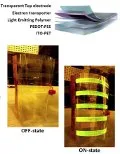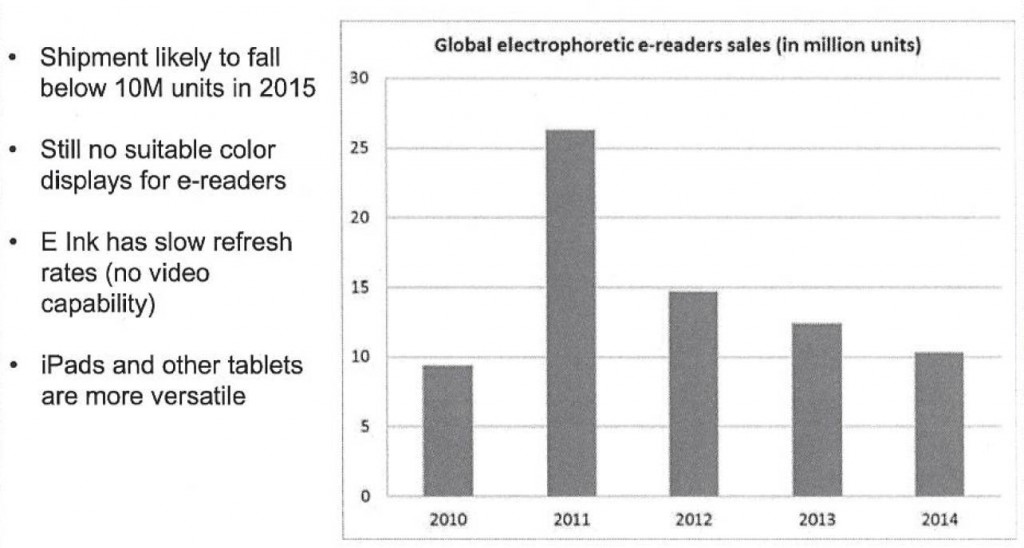cMobile Displays, Large Displays – The 2014 Printed Electronics Conference (Santa Clara, CA, November 18-20) provided a good opportunity to assess the technology candidates and market prospects for flexible and printed displays.
For example, the opening day tutorial included a presentation by Dr. Guillaume Chansin of IDTechEx in which he devoted a good portion of his presentation time to bi-stable and flexible display markets and technologies particularly as they relate to printed displays. In addressing the state of flexible and printable displays Dr. Chansin covered AC electroluminescent, OLED, light-emitting electrochemical cell (LEC), electrophoretic and electrochromic displays. After a brief description of the potential and technological challenges of AC electroluminescent and light-emitting electrochemical cell displays, he reviewed the current status of electrophoretic (E-Ink) displays.
Dr. Chansin pointed out that although black and white E-Ink displays based on cost-effective roll-to-roll manufacturing on flexible substrates have seen a success in the e-reader market, color electrophoretic displays have not yet been widely accepted owing to their poor color saturation and contrast resulting from the use of color filter technology. He cited electrophoretic display market applications not only to ereaders but also some mobile handsets. Dr. Chansin then proceeded to show that the “iPad effect,” which has driven readers to the use of tablet PCs with color LCDs, has led to a substantial decline in the unit sales of ereaders with electrophoretic displays as illustrated by his data and observations below.
Source: IDTechEx
After seeing shipments of more than 25 million units in 2011, IDTechEx’s forecast that shipments of electrophoretic display ereaders are likely to fall below 10 million units in 2015, suggests a bleak future for this once promising display technology.
Dr. Chansin also presented examples of current work on electrochromic displays which although a relatively well-understood, older technology is seeing continuing development efforts. For example, he presented an example of a recent electrochromic display (illustration below) from Swedish research institute Acreo.
Source: IDTechEx
A presentation by Acreo at Printed Electronics 2014 revealed that the Swedish research institute, while working on electrochromic displays, is also developing a platform for printed electronics comprising displays, transistors, diodes and sensors including printed flexible displays. The institute sees applications of its printed electronic and display technology to sheet printed smart labels, printed biosensors and it is also developing through-body capacitive network communication.
Another Scandinavian presenter, Antti Kemppainen from the VTT Technical Research Centre of Finland presented on Flexible Freeform Products Enabled by Printed and Hybrid Electronics Manufacturing Processes. VTT are conducting research on printed transistors, solar cells, OLEDs and batteries. One example of VTT’s efforts is its roll-to-roll (R2R) manufacturing of transparent OLEDs is shown below.
Source: VTT
VTT uses R2R rotary screen printing of etching gel to pattern the ITO-PET film of the flexible OLED. VTT also uses R2R gravure printing of the functional OLED layers (hole transport layer, electron transport layer, light emitting polymer layers) and then go on to use R2R rotary screen printing of the transparent conductive top electrode of the OLED structure. Finally, VTT uses a R2R dry lamination of barrier films using barrier adhesive layers to encapsulate the transparent OLED device. As these and numerous other developments in the Printed Electronics 2014 conference sessions and trade show made clear, printed and flexible displays and electronics are coming of age. – Phil Wright




